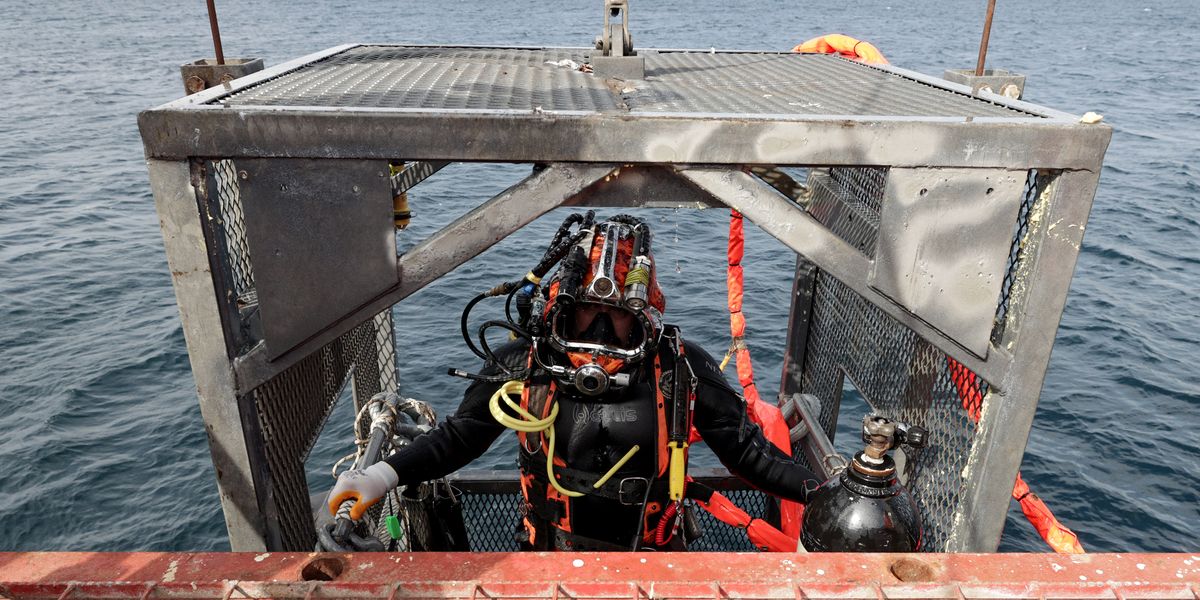How to Become an Underwater Welder Salary, School, Death
Underwater Welding: A High-Stakes Career

Underwater welding is one of the most perilous professions globally, yet it offers lucrative opportunities for skilled commercial divers. Recently, a bulk carrier navigating the icy Baltic Sea faced severe challenges due to damaged propellers caused by ice impacts. A team of specialized divers undertook a ten-hour underwater mission to repair the vessel, showcasing the critical role of underwater welding in maritime operations.
The Challenges of Underwater Welding
Transiting the Baltic Sea during winter is fraught with danger. The northern region often freezes, creating treacherous conditions for merchant ships. Although climate change has reduced the average ice cover, it has also made conditions more unpredictable. A nearly 600-foot bulk carrier recently encountered severe ice conditions, leading to unusual vibrations and a decline in performance. The ship’s operator called in a team of commercial divers to assess the damage.
Upon inspection, the divers discovered that three of the ship’s four propellers were bent from ice impacts. The team worked tirelessly underwater for ten hours, successfully straightening the propellers and enabling the vessel to continue its journey. This incident highlights the importance of underwater welding, which is not only a technical skill but also a critical service in maintaining maritime infrastructure.
Underwater welding is recognized as one of the most dangerous jobs, with risks including drowning, decompression sickness, and hypothermia. According to the U.S. Bureau of Labor Statistics, there were 3,380 commercial divers in the U.S. as of 2017, with a significant number of nonfatal injuries and fatalities reported. Despite these dangers, the profession is rewarding, with average annual earnings around $76,000, and some divers earning between $39,000 and $137,000. The demand for underwater welders is high due to aging infrastructure that requires specialized repair work.
Pathway to Becoming an Underwater Welder
To embark on a career in underwater welding, individuals must obtain certifications in both diving and welding, along with specialized training in underwater techniques. Kimball Johnston, a seasoned welder and director of training at the Atlantic Commercial Diving Centre, emphasizes the importance of foundational skills. “If you are a good topside welder, you can be a good underwater welder,” he states, highlighting the need for confidence in welding abilities.
Training programs for commercial diving are competitive, often accepting only a limited number of students each year. Johnston’s school offers a program that includes hands-on experience in wet welding, allowing students to practice in controlled environments. A solid understanding of math is also essential, as it underpins diving physics and safety protocols.
Commercial divers may work in various locations, with Florida and California having the highest job postings. The work often involves maintaining underwater structures, including bridges and offshore oil rigs. As the demand for underwater welding continues to grow, so does the need for well-trained professionals in this challenging field.
While the job is fraught with risks, proper training and preparation can lead to a long and successful career. Johnston notes that many divers continue to work well into their 60s, attributing their longevity to fitness, training, and experience. “It’s not easy to be underwater and welding, so staying fit and having proper training will help with longevity,” he concludes.
